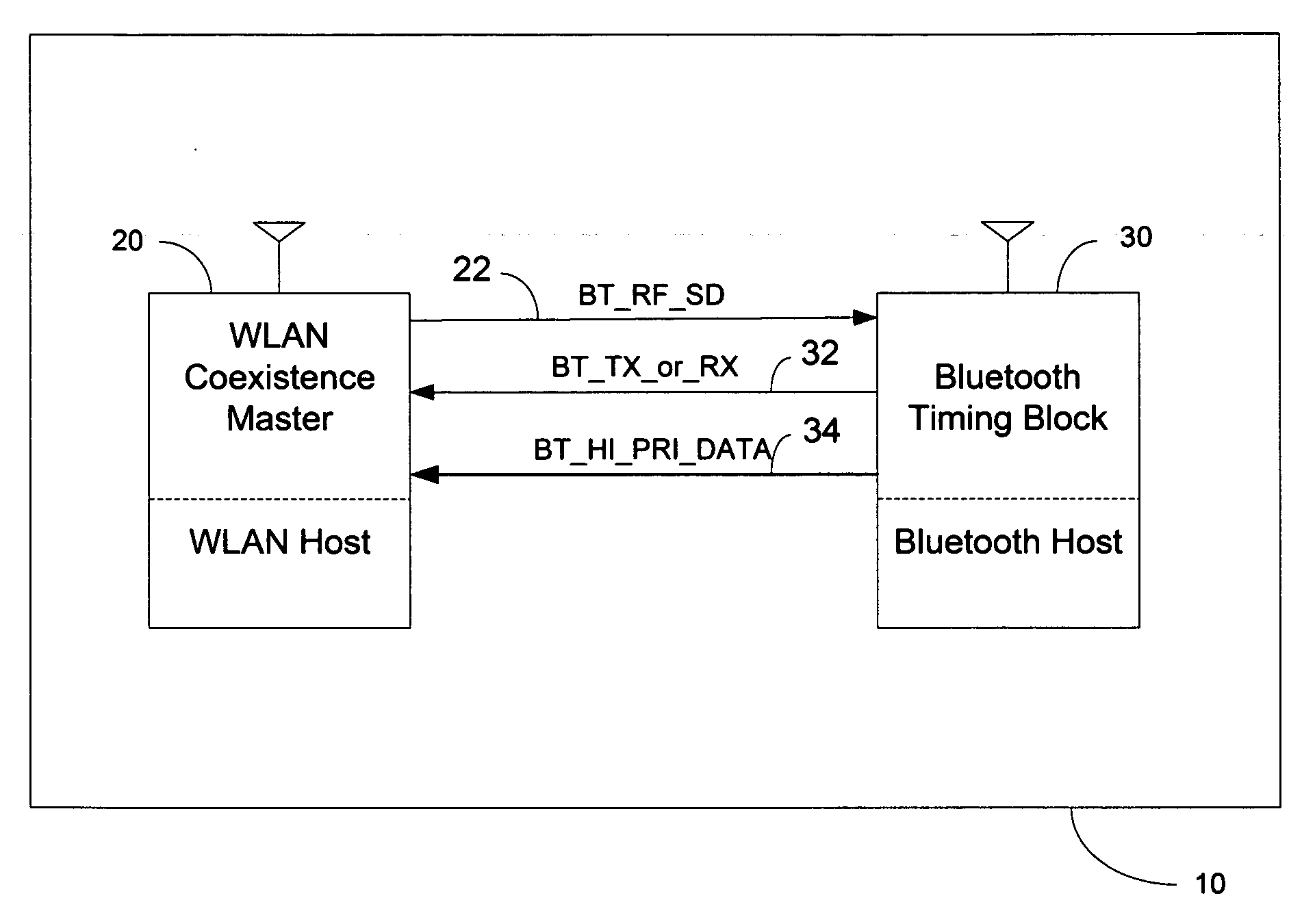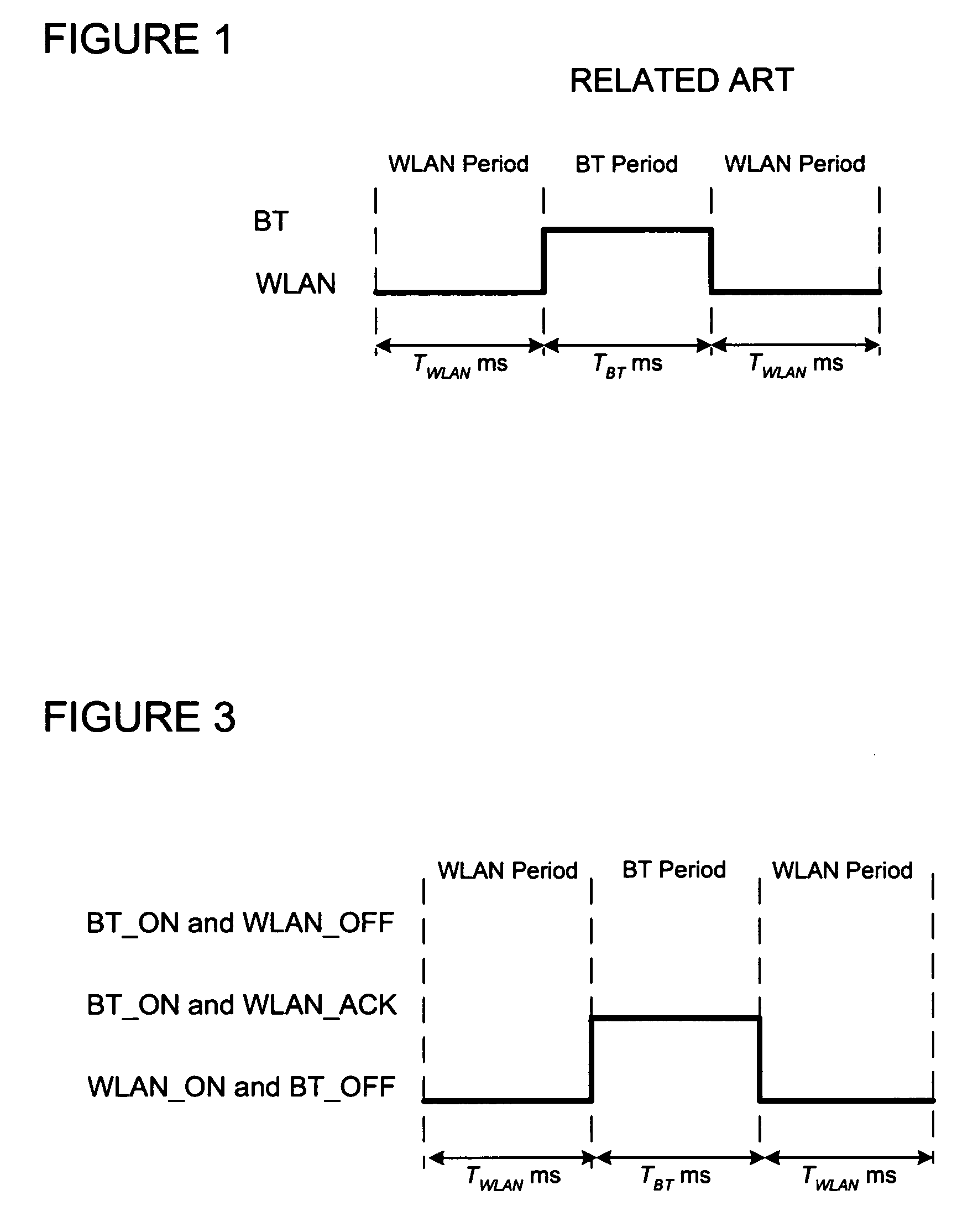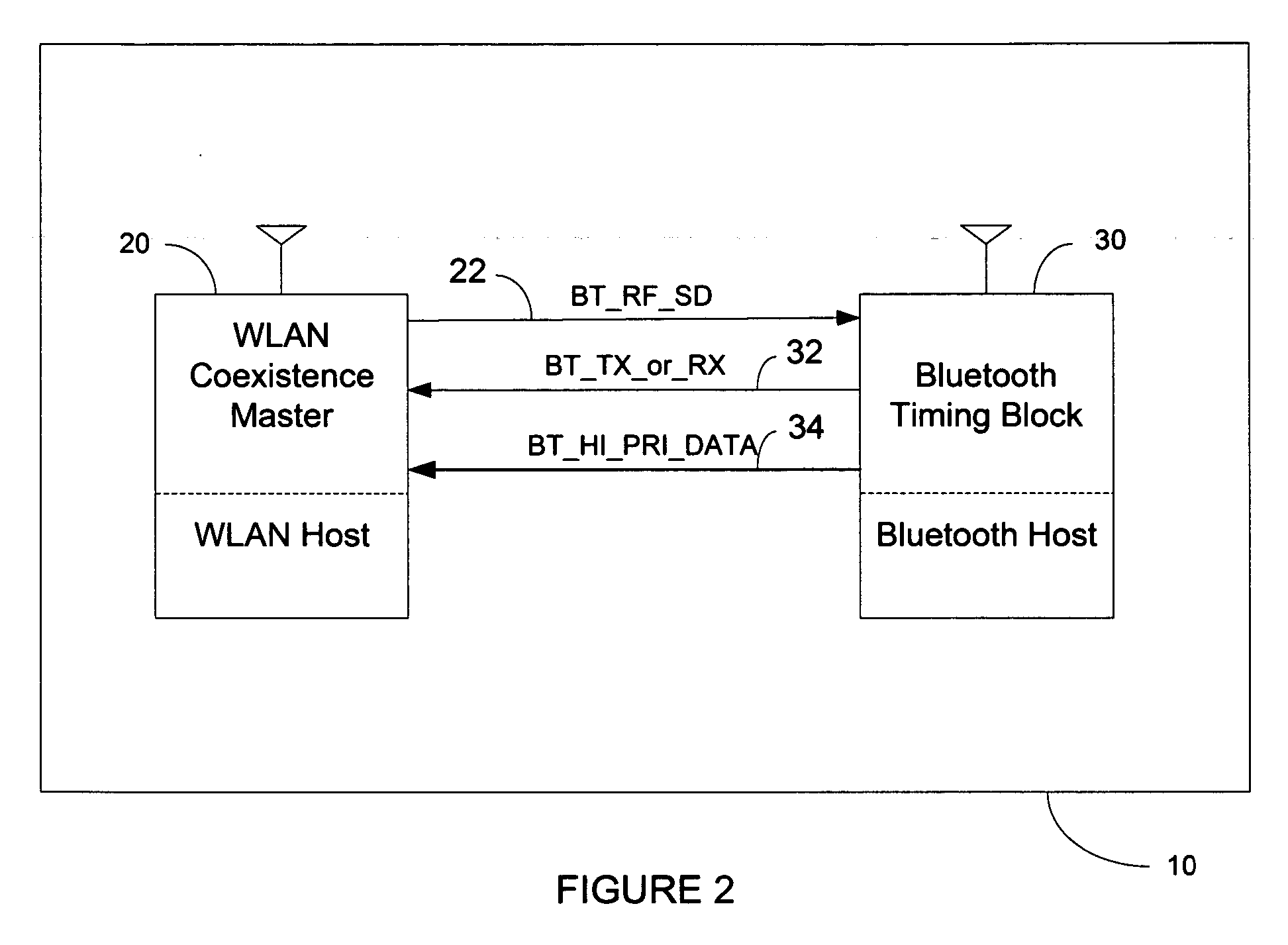Method of wireless local area network and Bluetooth network coexistence in a collocated device
a wireless local area network and bluetooth technology, applied in the field of collocated wireless local area network/bluetooth (wlan/bt) devices, can solve the problems of severe radio interference, radio interference between these two wireless networking technologies, and radio interference can become a severe problem
- Summary
- Abstract
- Description
- Claims
- Application Information
AI Technical Summary
Benefits of technology
Problems solved by technology
Method used
Image
Examples
Embodiment Construction
[0031]FIG. 2 illustrates an exemplary embodiment of the present invention that may comprise a collocated WLAN / BT device 10 including a WLAN system 20 and a BT system 30. The WLAN system may include a WLAN coexistence master that determines the state of transmission and reception of the WLAN system 20 based on internal knowledge of the WLAN system 20 and may include a BT system 30 that may provide timing signals for transmission and reception of the BT system 30. The WLAN coexistence master of the WLAN system 20 may provide a signal, for example, BT_RF_SD 22, to the BT system 30 that shuts down the BT system's radio frequency transmissions according to an algorithm, which implements the coexistence mechanism. The BT system 30 may provide a timing signal, for example, BT_TX_or_RX 32, to the WLAN system 20 that may indicate the BT system 30 transmitting or receiving a BT signal. In various exemplary embodiments, The BT system 30 may provide a signal, for example, BT_HI_PRI_DATA 34, tha...
PUM
 Login to View More
Login to View More Abstract
Description
Claims
Application Information
 Login to View More
Login to View More - R&D
- Intellectual Property
- Life Sciences
- Materials
- Tech Scout
- Unparalleled Data Quality
- Higher Quality Content
- 60% Fewer Hallucinations
Browse by: Latest US Patents, China's latest patents, Technical Efficacy Thesaurus, Application Domain, Technology Topic, Popular Technical Reports.
© 2025 PatSnap. All rights reserved.Legal|Privacy policy|Modern Slavery Act Transparency Statement|Sitemap|About US| Contact US: help@patsnap.com



